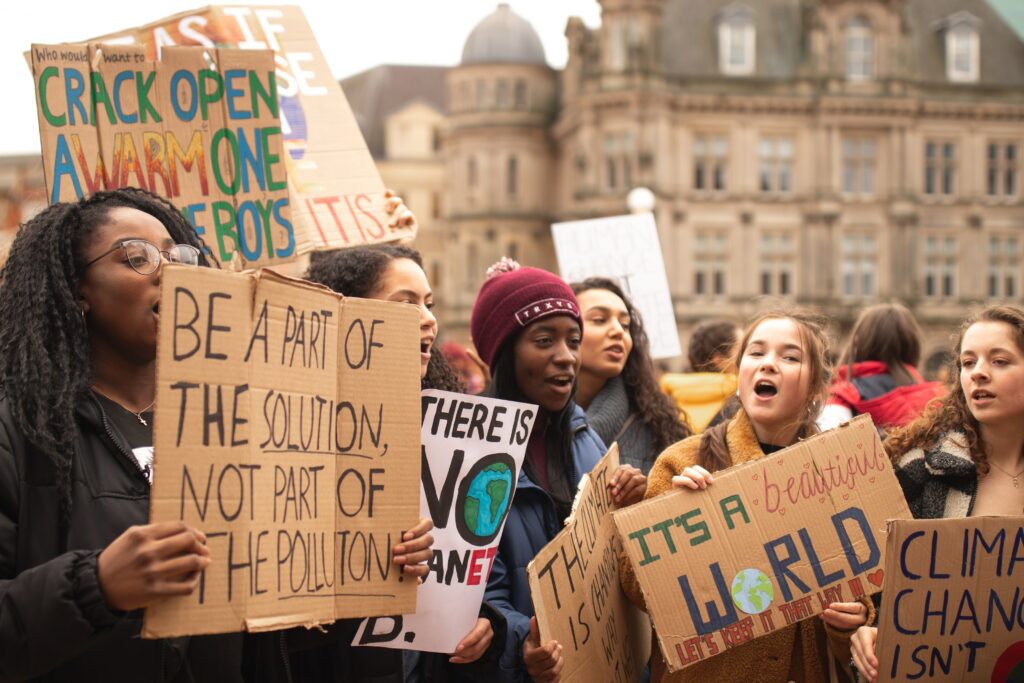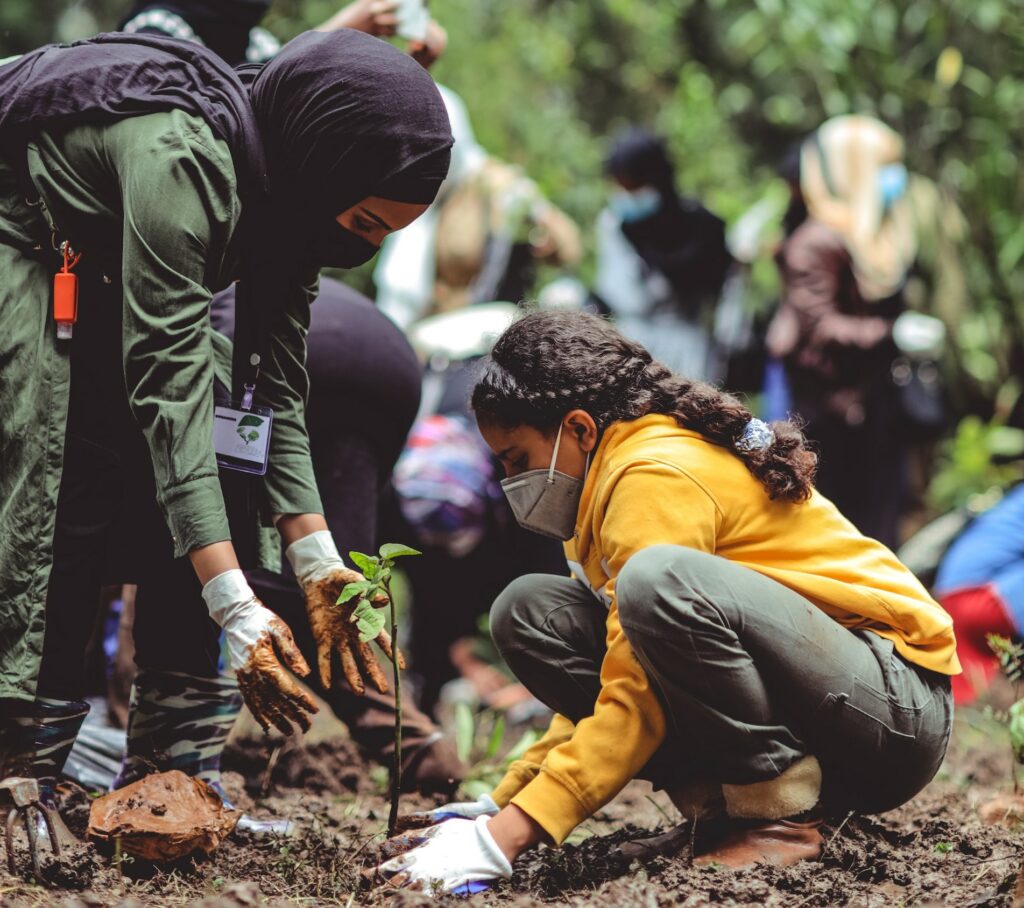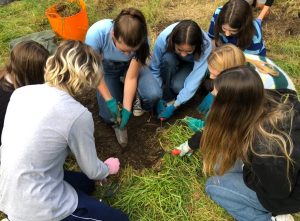
10 ideas for lowering carbon emissions in schools
This article was written by Jo Foster, Director of the Institute for Research in Schools, and published on the SecEd website. SecEd is a magazine written by teachers, for teachers, offering a positive and constructive voice for teachers and school leaders working in secondary education across the UK.
Young people have the capacity to change the world. If their education empowers them with the right tools, I have seen time and time again that school-aged students can contribute and make a difference in their communities right now.
Ultimately, it will be down to our young people to solve the climate emergency. So, what better way to inspire the next generation of change-makers, than by giving them opportunities to become active citizens empowered to solve some of the most pressing issues we face.
At IRIS we want to empower students to take informed action by giving them a voice which is recognised by their community.
The focus of IRIS is on empowering students from all backgrounds to be change-makers, by putting them in charge at every stage of a project which increases their knowledge, skills, and confidence.
An impactful example of this is through our Carbon Researchers project, where students investigate their own carbon footprint and devise their own plans to reduce their school’s footprint.
In practice, this project saw students from the Ladies’ College in Guernsey join with other schools to work on a carbon reduction plan, and consequently they met with minsters from local government. They lowered their school’s impact on the environment by decreasing car travel, using renewable sources of energy, and reducing food waste, as well as contributing towards the island’s environmental strategy.
At IRIS we want to empower students to take informed action by giving them a voice which is recognised by their community.
That’s why, as part of our STEM Research and Innovation in Schools Framework we encourage school leaders and teachers to work closely with their local community and local employers, including parents and carers, to provide research and innovation opportunities for all.
Science and technology are becoming ever more important in our daily lives, and to the economy. Now we are looking to those who work in STEM to help us solve some of the biggest issues humanity has ever faced, and this of course includes reducing global warming and combating the inevitable effects of climate change.
So, here I would like to share 10 ways I have seen students leading the way in reducing their schools’ impact on the environment.
1. Encourage ride-sharing schemes and alternative modes of transport
All school staff and students can play an active role in reducing their school’s carbon emissions. At the Ladies’ College on Guernsey, students advertised a “ride to school week” where they placed had a big map at the entrance of the school, giving everyone the chance to place a dot where they travelled in from, whether by walking or cycling, so students could travel in together. This proved a successful way to encourage as few vehicles as possible to be used to get to and from school.
2. Launch a ‘Green Awards’ system
Think about how to make carbon impact reduction activities sustainable in the long term. If your school doesn’t already have a student-run eco-committee – start one. Getting students involved in decision-making around sustainability will develop their responsibility and accountability and will empower them. Impact only lasts where there are structures in place that successive waves of students recognise as important. This could be done by giving out prizes when certain aims are met. Sir Robert Woodard Academy in Sussex did this successfully by introducing the “Carbon Merit”. This was awarded to students, for example, when they reminded others to pick up litter or recycle. This allows the whole student body to take part and realise that there is merit in reminding their peers to make even the smallest changes to help the environment.
Our Carbon Researchers project at the Ladies’ College, saw students’ passion for climate action channelled into practical change.
3. Start student-led campaigns to reduce energy use
Get students to be vocal and organised about all types of energy usage, from unplugging chargers when not in use to turning out lights when leaving a classroom – encouraging students to make their own campaigns can all have positive impacts in reducing energy costs and broadening wider knowledge around carbon emissions. This is not only good for their overall development, but it is a sustainable way to save money on energy.
4. Place helpful information around school, no matter how small
While working on the Carbon Researchers project, year 9 students at Sir Robert Woodard Academy recognised through their initial audit of their school’s emissions that computers on standby were wasting a lot of energy. They took immediate action to remind staff and other students to switch them off. Students designed messages to be put on every computer screen saying: “Don’t forget to turn off the computer.” This is a simple idea that works and can reduce energy-use.

5. Encourage students to grow plants and trees
This can contribute to a greater respect for the school environment and can foster a stronger commitment to the school community. Schools can offset the financial burden of the investment by looking to local and national charities for free plants and trees. For example, Dixons Allerton Academy in Bradford contacted The Woodland Trust while working on our Treezilla project (see further information). This resulted in trees being planted for free by students on the school premises.
6. Complete a carbon usage audit
As part of our Carbon Researchers project, students from St Augustine’s Priory in London began to collect data around how their school building runs. Using actual energy cost figures for illustration enabled the students and staff to visualise their impact on the environment. Meanwhile, students at St Anne’s School in Alderney investigated for themselves how and where carbon is being emitted by collecting data via surveys and looking at utility bills.
7. Introduce meat-free days
By moving away from eating high-impact carbon emitters such as animals and moving towards a plant-based diet, our overall CO2 impact can be reduced. Production of beef typically has the biggest carbon footprint. Schools might consider including a greater selection of foods like tofu, soya, nuts, and beans on the menu for one day of the school week. The Ladies’ College was keen to reduce food waste and as part of a project to get younger children to eat more vegetables, they involved all parts of the school to increase knowledge about the environmental impact of meat consumption. They achieved their aim of increasing knowledge about food consumption, while actively reducing their school’s carbon emissions.
 Sixth formers planting bluebell bulbs at Simon Langton Girls Grammar School in Kent
Sixth formers planting bluebell bulbs at Simon Langton Girls Grammar School in Kent8. Introduce more green spaces
As part of our Well World project, students at Simon Langton Girls Grammar School in Kent worked together to increase the biodiversity of their green spaces around school by planting bluebells and cultivating butterfly gardens. This gave the students a sense of responsibility and empathy by interacting with the environment around them. This project has shown us that by giving students the opportunity to be closer to nature it can improve their mental health, reduce climate anxiety, and help them achieve.
9. Recycle
Cut-down on food and single-use item waste wherever possible. At St Bernard’s Catholic High School in Barrow, a student group started a food composting system. Single-use plastic waste contributes to a range of climate problems, including greater energy consumption. Instead of purchasing single-use items, creating a culture of long-term sustainability that cuts out things like plastic cups, straws and stirrers will benefit the environment, as well as saving money in the longer-term.
10. Encourage students to work with the wider community
The success of our Carbon Researchers project at the Ladies’ College, saw students’ passion for climate action channelled into practical change. After students collected data about their own school, they visited a post office to investigate their solar panels and met with members of local government to present their findings. As one student said: “It is not perfection for some, but improvement for all.”
Find out more about the issues that matter to secondary education professionals by visiting the SecEd website. You can subscribe to their free magazine, listen to their podcast and receive regular newsletters to your inbox.